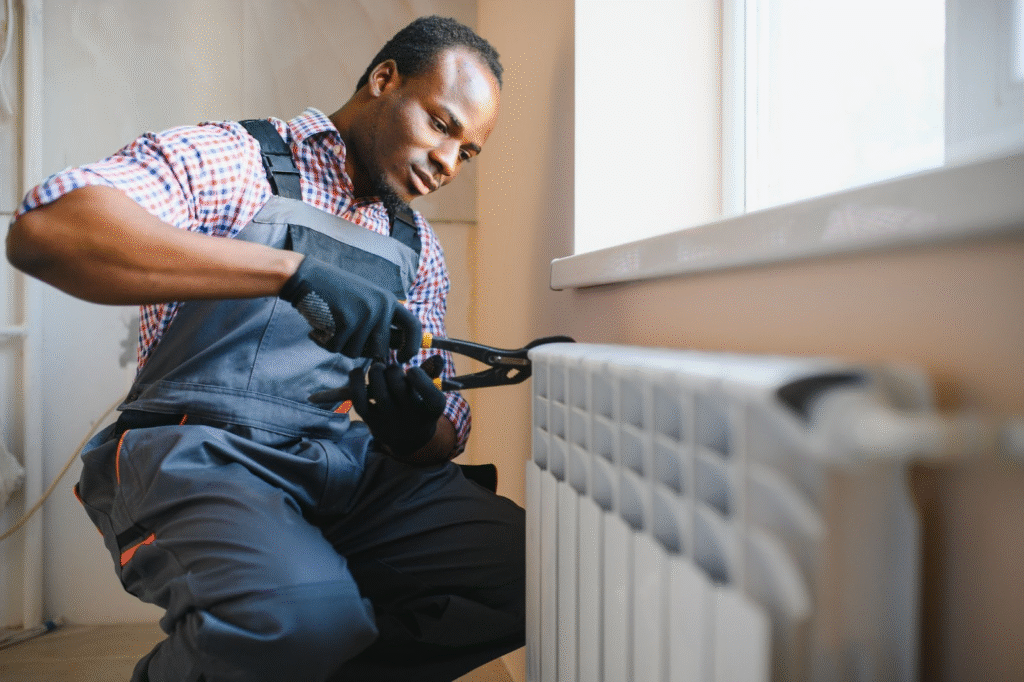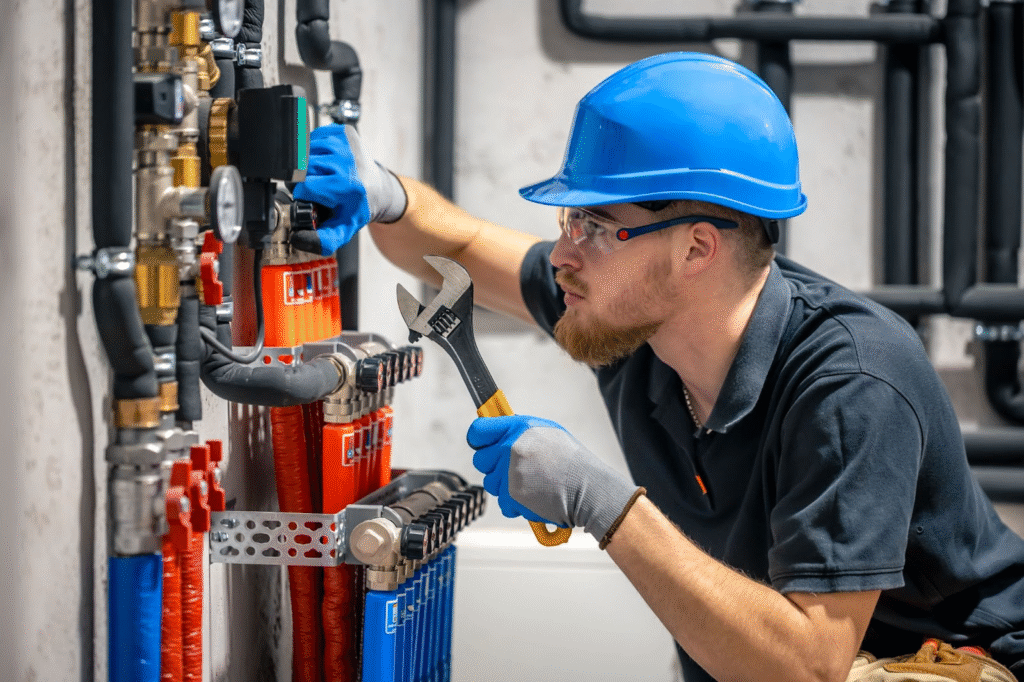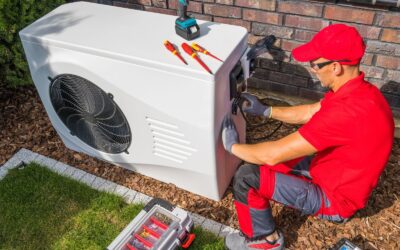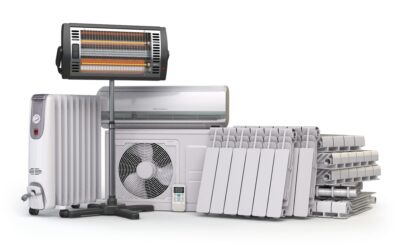Heating Services vs. System Replacement: How to Decide What’s Best

When your home won’t warm up—or it costs too much to do it—you face a familiar dilemma: repair what you have or invest in something new. The right call balances safety, reliability, efficiency, comfort, and budget. Below, you’ll find a practical way to compare options, allowing you to choose confidently, whether that means scheduling heating services for targeted repairs or moving forward with a complete system upgrade.
Heating Services vs. Replacement: Start With the Real Problem
Before making a decision, isolate the root cause. Many “end-of-life” systems are actually suffering from simple issues like airflow restrictions, dirty burners, clogged filters, failed igniters, or malfunctioning sensors. A thorough diagnostic visit lays out what failed, why it failed, and how close the rest of the system is to another breakdown. Use that inspection to separate temporary nuisances from symptoms of more profound decline. If the findings point to a healthy heat exchanger, stable electrical components, and sound static pressure, repairs through heating services may restore performance at a fraction of the cost of replacement.
Heating Services and the Economics of Repair vs. Replace
A wise decision weighs near-term spend against long-term ownership costs. Add up the immediate repair, likely follow-on repairs, energy use, and the risk of a no-heat event during peak season. Then compare that total to financing or paying for a new system, along with its expected efficiency and warranty coverage. If the repair keeps you safe, avoids repeat calls, and doesn’t erase the savings of waiting a few more seasons, it’s usually the better move. If the fix just kicks the can—especially on older equipment—replacement starts to look more rational because it reduces surprise costs and stabilizes your monthly bills.
Think In Ownership Years
One cheap repair isn’t cheap if it’s the first of many. Project costs over 3–5 winters, not just this week.
Factor In Energy Spend
Improved efficiency can offset a portion of the payment. Consider fuel type, runtime, and local rates.
Heating Services That Extend Life—and When They Don’t
There’s a category of work that reliably squeezes more life from aging equipment: cleaning burners and flame sensors, recalibrating gas pressure, tightening electrical connections, replacing worn igniters and capacitors, correcting airflow, and sealing obvious duct leaks. These tasks reduce strain, restore steady combustion, and often cut cycling that wastes fuel. However, there are lines you shouldn’t cross with repairs. A cracked heat exchanger, recurring overheat trips, or repeated inducer and control board failures suggest systemic wear. In those cases, heating services can’t guarantee safety or reliability, and replacement becomes the responsible choice.
Heating Services for Comfort Issues That Mimic Equipment Failure
If some rooms are cold while others are too hot, the furnace or heat pump may not be the culprit. Duct design, return placement, insulation gaps, and leaky boots routinely create uneven temperatures and long runtimes. Targeted heating services can measure static pressure, balance airflow, seal returns, and right-size grilles, unlocking performance you already own. Many homeowners discover that once the air moves correctly, the “old” unit feels new again—without touching the equipment beyond basic maintenance.
Fix the Airflow First
Balanced supply and return often solves hot-and-cold spots faster than swapping equipment.
Seal What You’ve Paid To Heat
Leaky ducts can allow conditioned air to escape into the attic. Sealing returns makes an immediate difference.
Heating Services vs. System Replacement for Energy Efficiency Goals
Efficiency upgrades pay you back over time, but the timeline matters. If your current system is running safely and is under ten years old, incremental improvements—such as clean heat exchangers, precise gas tuning, optimized airflow, and tightened ducts—can deliver meaningful savings without a large capital outlay. If the unit is older, cycles frequently, or uses outdated technology, a modern furnace or cold-climate heat pump may reduce energy use enough to justify an upgrade sooner. Pair that with updated thermostatic controls and better filtration, and you improve both bills and air quality. When you compare options, model your real usage: climate, set points, occupancy, and fuel prices determine how quickly a high-efficiency replacement pays off.
Heating Services That Protect Safety and Peace of Mind
Nothing outranks safety. Combustion appliances require regular attention to detect issues such as cracked heat exchangers, improper venting, or carbon monoxide risks. Here, heating services provide essential tests: combustion analysis, draft verification, and sensor checks that catch trouble long before it becomes hazardous. If a safety inspection raises red flags that can’t be fully resolved—or if key parts are obsolete—replacement isn’t an upgrade; it’s a safeguard for your household. In those scenarios, the value of a new warranty and proven safety far outweighs any savings from a temporary fix.

Heating Services During the Off-Season: Timing Your Decision
Timing influences both price and stress levels. Scheduling diagnostics and non-urgent repairs during the shoulder seasons provides more flexibility and often better availability. If you’re leaning toward a new system, ordering before the first cold snap helps you avoid emergency premiums and ensures proper load calculations and installation quality. On the other hand, if the system is stable and your heating services checklist comes back clean, it can be smart to plan for replacement next year, giving you time to budget, compare models, and tackle duct improvements first.
Buy Time Intentionally
Use a solid repair to bridge to next season while you plan the bigger upgrade on your terms.
Don’t Rush the Install
Good design and commissioning matter more than brand. Give your contractor time to get them right.
Making the Call With Heating Services and Replacement Options
Start with a comprehensive diagnostic and ask your contractor to share actual measurements—static pressure, temperature rise, combustion results, and electrical readings—so you know exactly what’s failing and why. Price a durable repair that addresses the cause, not just the symptom. In parallel, price a right-sized replacement that includes duct improvements and proper commissioning. Compare three- to five-year ownership costs, including the likelihood of additional repairs and your expected energy use. If the math and safety findings favor repairs, schedule heating services now and revisit replacement on a planned timeline. If reliability, safety, or efficiency clearly tip the scales the other way, move forward with a new system and benefit from stable comfort, predictable bills, and a strong warranty.
Visit the Cooling and Heating Repair blog to learn more about heating services and system replacements for your home and business.
Categories
- AC installation
- AC Installer
- AC Repair
- AC Repair/Heater Repair
- AC System Maintenance
- Air Conditioning Repair
- Air Conditioning Services
- Appliance Repair
- Furnace Repair
- Heater Repair
- Heater Repair Services
- Heating Services
- HVAC
- HVAC and Appliance Repair Services
- HVAC Installation
- HVAC Services
- Promotion
- Thermostat installation
- Uncategorized


